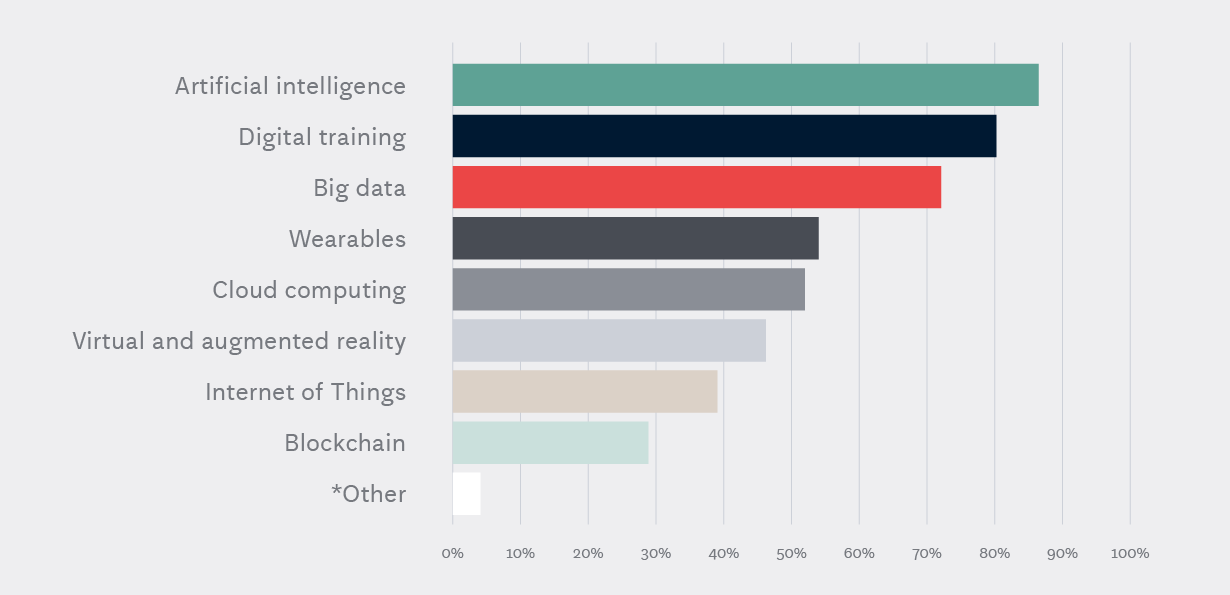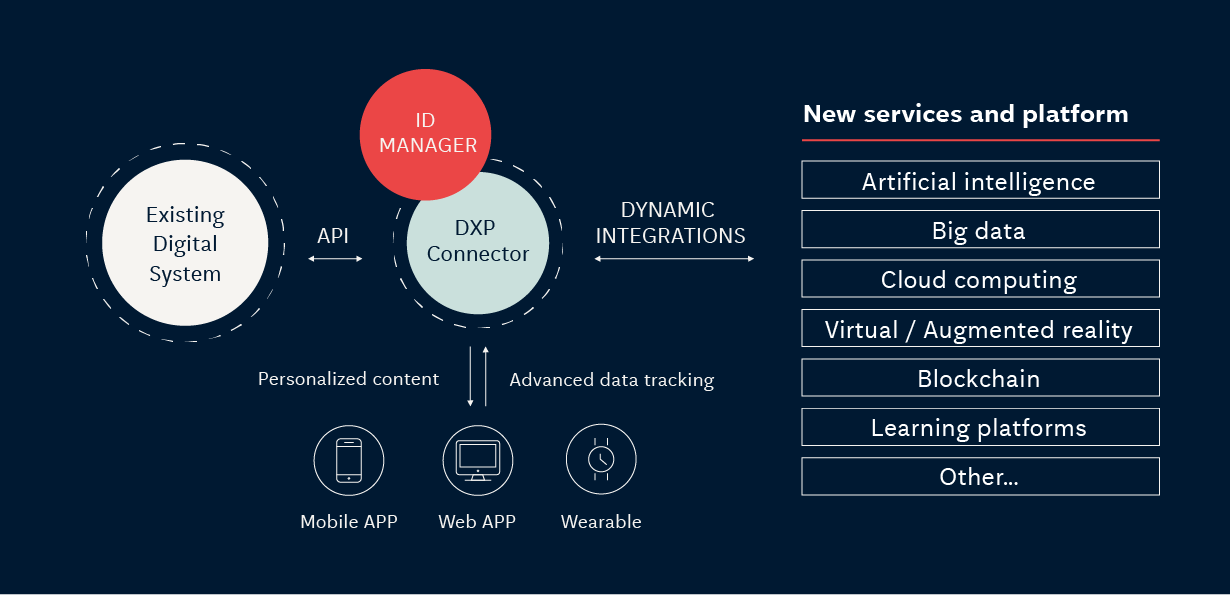How to incorporate new technologies into your digital ecosystem
September 1, 2021 / 4 min read

Implementing new technologies into a digital ecosystem in a large company can be challenging. That’s because of a few things. First off, incorporating new technologies can be time-consuming, as the decision-making process is complex and extensive, especially when you deal with limited staff or resources. Secondly, previous IT systems and solutions can cause problems with integrations due to something called technical debt. Insufficient know-how can also be a significant problem. So, what can you do to overcome these challenges and implement new digital solutions and technologies in your ecosystem successfully? Let’s find out!
In the modern dynamic world, incorporating new technologies and solutions can decide on your success or failure. That’s primarily because customers simply expect you to keep up with all the novelties and offer modern, flexible solutions they can benefit from. Apps and websites customers use privately are continually improved. The UX is frequently measured and necessary adjustments are implemented swiftly. As a result, users are used to high quality and they expect it also in the healthcare area.
So, that’s your reality – if you want to grow sales, your company must incorporate new technologies. And, frankly, it doesn’t really matter whether you work in healthcare, manufacturing or logistics. This trend is ubiquitous.
Of course, easier said than done. According to our recent research and webinar we conducted in July 2021, there are five critical obstacles that make the whole process of implementing new technologies more complicated and time-consuming than it should be:

For the purpose of publishing a comprehensive source of knowledge, we’ve talked to tens of pharma and marketing professionals in large companies. Now, we present some of the most interesting opinions:
- “We need new ways of (agile) working. More risk-taking!”
- “I believe that higher investment in non-drug related projects is essential.”
- “Faster adoption of new regulations, a more customer-centric mindset, new capabilities at scale.”
- “New technical solutions should answer real business needs in our company.”
Frequently, the problem is in our heads, but also in the lack of a proper strategy. Of course, sometimes, the source of all evil lies in budget-related issues, but that’s not a rule. How can you overcome these and other obstacles that block you from incorporating new technologies in your digital ecosystem? We want to show an exemplary, straightforward approach that consists of four essential steps.
Incorporate new technologies: 4 steps
Step 1: Research & Data
When it comes to new technologies, there’s no room for art for art’s sake. Implementing new digital solutions takes time (and money), and doing that without solid research may lead to solutions that don’t meet expectations and do not solve the defined problem/objective. What should you do? For starters, find out what modern technologies are currently prevalent and worth implementing in your sector.
In our Digital innovation in the Pharmaceutical Industry 2021 survey, respondents indicated several new technologies that they found applicable for the pharma industry:
We have three clear leaders (AI & big data, digital training) and five slightly less common but still important technologies (wearables, cloud computing, VR & AR, IoT and blockchain). Each of these solutions has its requirements and uses. Don’t rush into discovering (let alone implementing!) all of them at once. Consult your team, pick one or two most interesting technologies, and think about how they can improve your work.
Step 2: Assemble an implementation team
When it comes to any innovation, there has to be a clear division of roles. First off, create a team of three to four experts who will lead the implementation of this new technology. If your company hires hundreds of employees, someone has to oversee and direct each action. Usually, you’ll need a team that consists of:
- Project owners
- Tech architects
- Researchers
- Data analysts
- Legal advisors
- Marketing managers and, in the pharma world, medical writers
We talk more about assembling such an innovation team in this article.
Step 3: Implement this new technology through a DXP Platform
At NoA Ignite, we believe that DXPs (digital experience platforms) are unmatched when it comes to digital ecosystems. These versatile platforms can help you manage all of your IT/marketing/sales-related projects, including implementing new technologies. Thanks to so-called dynamic integrations, you can quickly and effectively incorporate almost any new technology without any hassle. Of course, such a platform has its requirements and getting everything up and running can take some time, especially when you’re doing it for the first time. But believe us, shortly, you won’t change your DXP platform for anything else. Once it’s fully operational, the facilitation it offers is beyond expectations.
If you want to find out more about digital experience platforms, we invite you to read our other blog posts, primarily these ones:
- DXP – a must-have in every modern company. Here, we explain why DXPs are so useful and how can they help you in everyday work.
- Streamlining communication and marketing in an international organisation through a CMS. A word of explanation here, DXPs are frequently referred to as CMS platforms, although you have to know that only the most advanced CMS platforms can be called DXPs. For instance, WordPress is a CMS but not a DXP because its functionality is limited to a specific website.
- Reach healthcare professionals and build their loyalty with modern technologies. If you work in the healthcare industry, this article is for you! Inside, you will also find out more about all these new technologies we talk about in this post.
Step 4: Train your employees
Granted, most likely, the team that will use this new technology will be much greater than your innovation team, correct? These other employees and departments need to be trained to know how to use this new solution, how it impacts their everyday work, and how it can be used to achieve business goals more effectively. You can’t expect people to get acquainted with your new technology on their own – guide them and show them all the benefits it entails. This way, you will win their support and engagement.
After such training, you’re good to go! Of course, the larger the company is, the more elements you have to take into consideration. Perhaps there are some procedures you have to follow, or more than one department needs to give you the green light. Although the process can be time-consuming, if the technology you select is truly useful, soon, you will see for yourself that the juice was worth the squeeze!
Author

Szymon Heliosz
Senior UX Designer & Customer Experience Strategist
Szymon is our man with a plan. His extensive 15-year experience in UX design, business strategy, and client development means he’s more than earned his stripes in leading and shaping user-centric strategies. Far from being a dictator, Szymon excels by connecting the dots between stakeholders. His ability to facilitate insightful interviews means he delivers what your business needs, not what you think it needs.
Related articles
![A well-crafted prompt doesn’t just work once. It works across teams, channels, and campaigns. It can be tweaked for new use cases and refined based on what performs best.]()
June 27, 2025 / 4 min read
Prompts are marketing assets: how to reuse, and scale them
Prompts aren’t throwaway lines. They’re repeatable, scalable assets that can streamline your marketing your team’s output. Learn how to build a prompt library that delivers.
![Woman using a wheelchair in the office settings]()
June 17, 2025 / 5 min read
What is accessibility and why it matters?
Accessibility ensures everyone — including those with disabilities or limitations — can read, navigate, and engage with your content equally.




